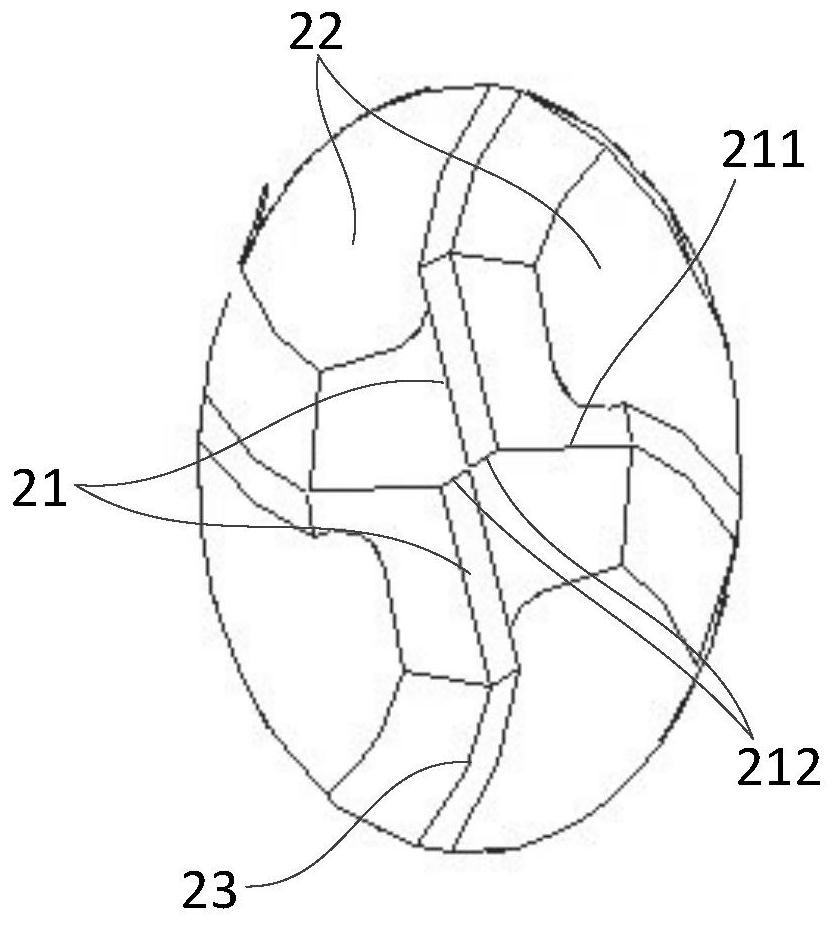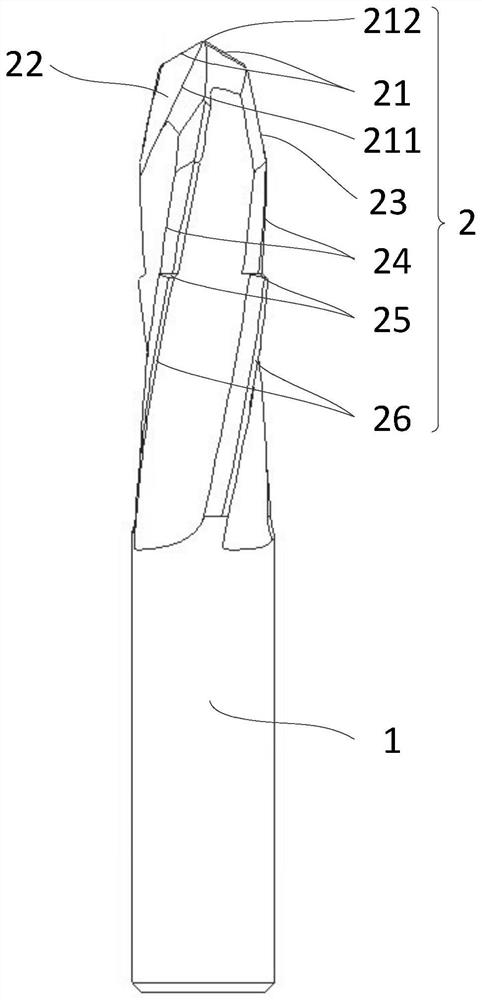Compound cutter for non-metal composite material
A technology of composite materials and composite cutting tools, which is applied in the direction of metal processing equipment, milling cutters, drilling tool accessories, etc., can solve the problems of low hole making accuracy, easy burrs, splitting, and easy wear and tear of cutting tools.
- Summary
- Abstract
- Description
- Claims
- Application Information
AI Technical Summary
Problems solved by technology
Method used
Image
Examples
Embodiment Construction
[0032] The core of the present invention is to provide a composite tool for non-metallic composite materials, which can improve the machining accuracy and efficiency of drilling.
[0033] In order to enable those skilled in the art to better understand the technical solution of the present invention, the composite cutting tool for non-metallic composite materials of the present invention will be described in detail below in conjunction with the accompanying drawings and specific implementation methods.
[0034] The composite knife for non-metallic composite materials of the present invention is used for processing non-metallic composite materials on robots or automatic production lines, and belongs to novel difficult-to-process materials. Figure 1A A structural schematic diagram of a specific embodiment of the composite cutter for non-metallic composite materials provided by the present invention, Figure 1B A partial structural diagram of the front end part of the composite t...
PUM
| Property | Measurement | Unit |
|---|---|---|
| Outer diameter | aaaaa | aaaaa |
Abstract
Description
Claims
Application Information
 Login to View More
Login to View More - R&D
- Intellectual Property
- Life Sciences
- Materials
- Tech Scout
- Unparalleled Data Quality
- Higher Quality Content
- 60% Fewer Hallucinations
Browse by: Latest US Patents, China's latest patents, Technical Efficacy Thesaurus, Application Domain, Technology Topic, Popular Technical Reports.
© 2025 PatSnap. All rights reserved.Legal|Privacy policy|Modern Slavery Act Transparency Statement|Sitemap|About US| Contact US: help@patsnap.com



